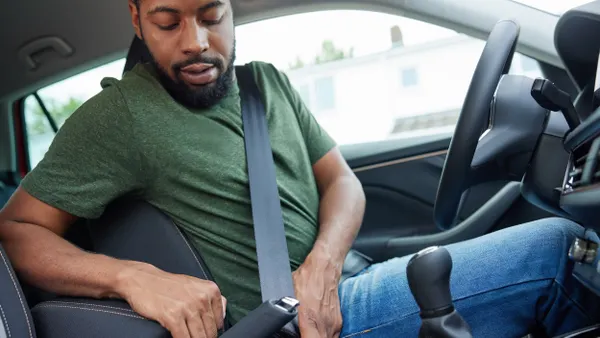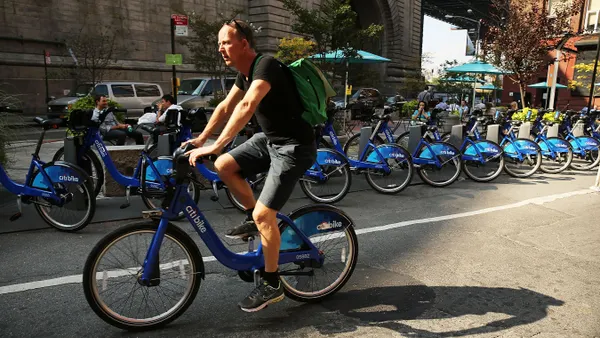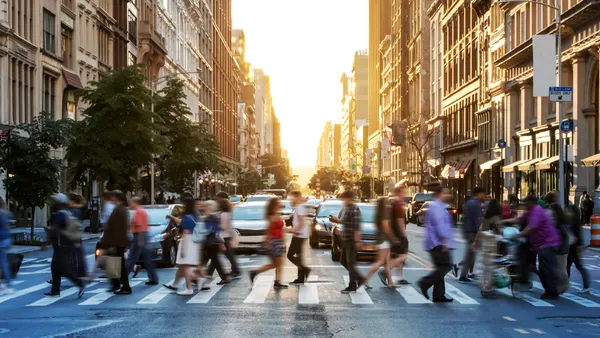An increasingly common refrain is being voiced again with the release of new governmental data sets: American workers’ commutes are getting longer. Plus, fewer commuters are using public transit for the trips.
Those insights come from a portion of the 2017 data recently released in the U.S. Census Bureau’s annual American Community Survey. The survey breaks down data in a variety of categories — including commute times and modes of transportation — for each individual community across the country in addition to providing nationwide data.
The average American’s one-way commute time ticked up slightly from 26.6 minutes in 2016 to 26.9 minutes last year. That might seem small, but it adds up to an extra 2.5 hours spent in traffic over a year’s time.
In general, the longest commute times occur in large cities or their suburbs. Residents in a far borough of the New York metro — East Stroudsburg, PA — had the longest commutes, followed by those in the immediate New York metro and the Washington, DC metro. The shortest commutes occurred in Walla Walla, WA; Grand Forks, ND; and Great Falls, MT.
When considering the way most people traveled to work, it’s not entirely surprising that commute times increased. The lion’s share of U.S. workers — 85.3% — drove to work in 2017, with 76.4% driving alone and 8.9% carpooling. Most of the increase in drivers is from people driving alone, an increase of just under 2 million people, compared with only 27,000 more carpoolers than the previous year.
Along with the increase in the number of people driving comes a dip in the number of commuters using public transportation. In 2017, 7.6 million people took public transportation, a loss of nearly 12,000 commuters. All major transit modes experienced decreases, with the exception of subways and railroads, which added about 65,000 and 13,000 commuters, respectively.
| Mode of transportation | Commuters in 2016 | Commuters in 2017 | % Change |
|---|---|---|---|
| Bus or trolley bus | 3.73 million | 3.64 million | -2.34% ▼ |
| Streetcar or trolley car | 92,014 | 91,956 | -0.06% ▼ |
| Ferryboat | 58,914 | 57,768 | -1.94% ▼ |
| Subway or elevated train | 2.88 million | 2.95 million | +2.27% ▲ |
| Railroad | 882,668 | 895,998 | +1.51% ▲ |
Alternative modes of commuting also took a hit. The number of people cycling to work slipped by about 3%, or 27,000 commuters, and those walking to work dropped by 32,000. Still, at 4.05 million, the number of people walking to work exceeds even the most-used public transit, buses, by about half a million people.
A noteworthy shift from 2017 and 2016 commuting data is the 5% increase in people who are not considered commuters because they work from home. The number of telecommuters — 8 million — now exceeds the total number commuting via all forms of public transportation — 7.6 million.
The telecommuter increase might be even larger than it appears in the raw data when considering the survey asked how people usually get to work, and a significant proportion of telecommuters only work from home a few days each week but more often commute to an office.
The U.S. Census Bureau offered the raw data from the survey but didn’t provide an in-depth analysis of the work-from-home statistics, so it’s unclear if the trend is more significantly pulling in commuters who used to drive or those who used to take public transit. Depending on which way the numbers stack up, the drop in transit ridership could be even more noteworthy. For example, if most of the people who now work from home used to drive, that means transit is experiencing a downturn for reasons other than losing commuters to teleworking.
Cities and transit agencies could use further analysis to devise campaigns to boost public transportation ridership or reduce single-passenger vehicle trips, and thus reduce traffic congestion and carbon emissions.










